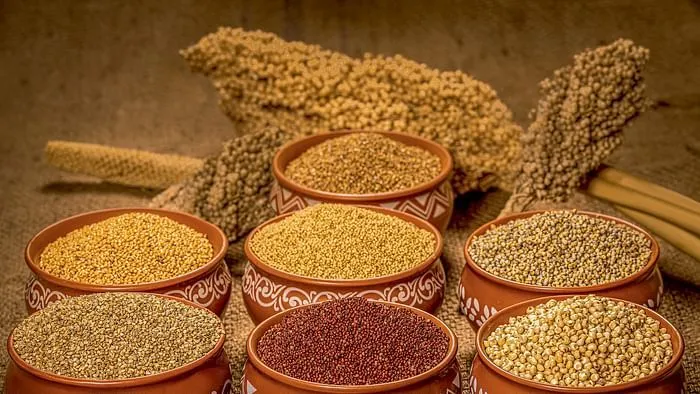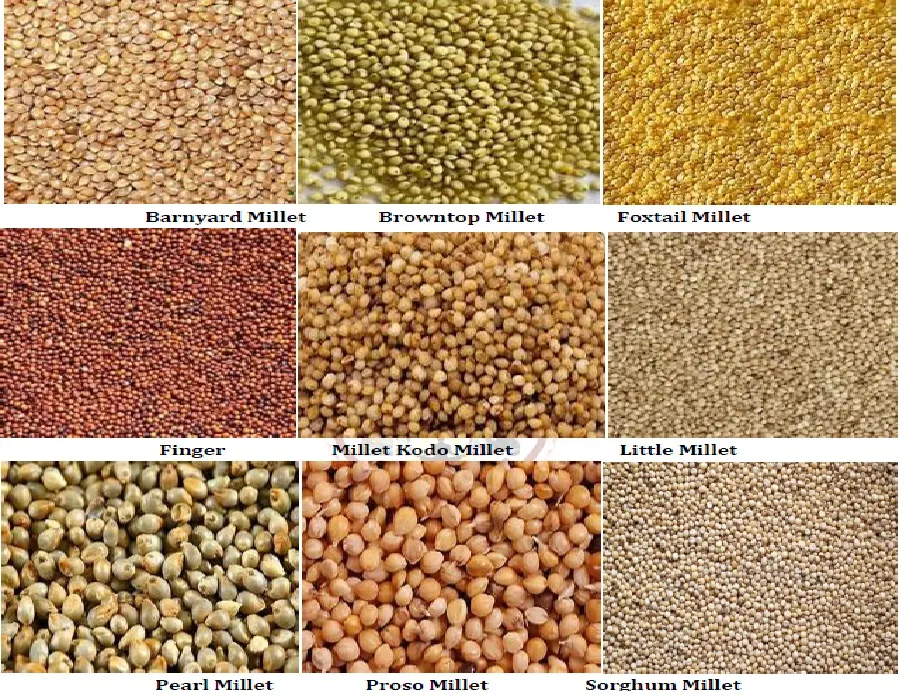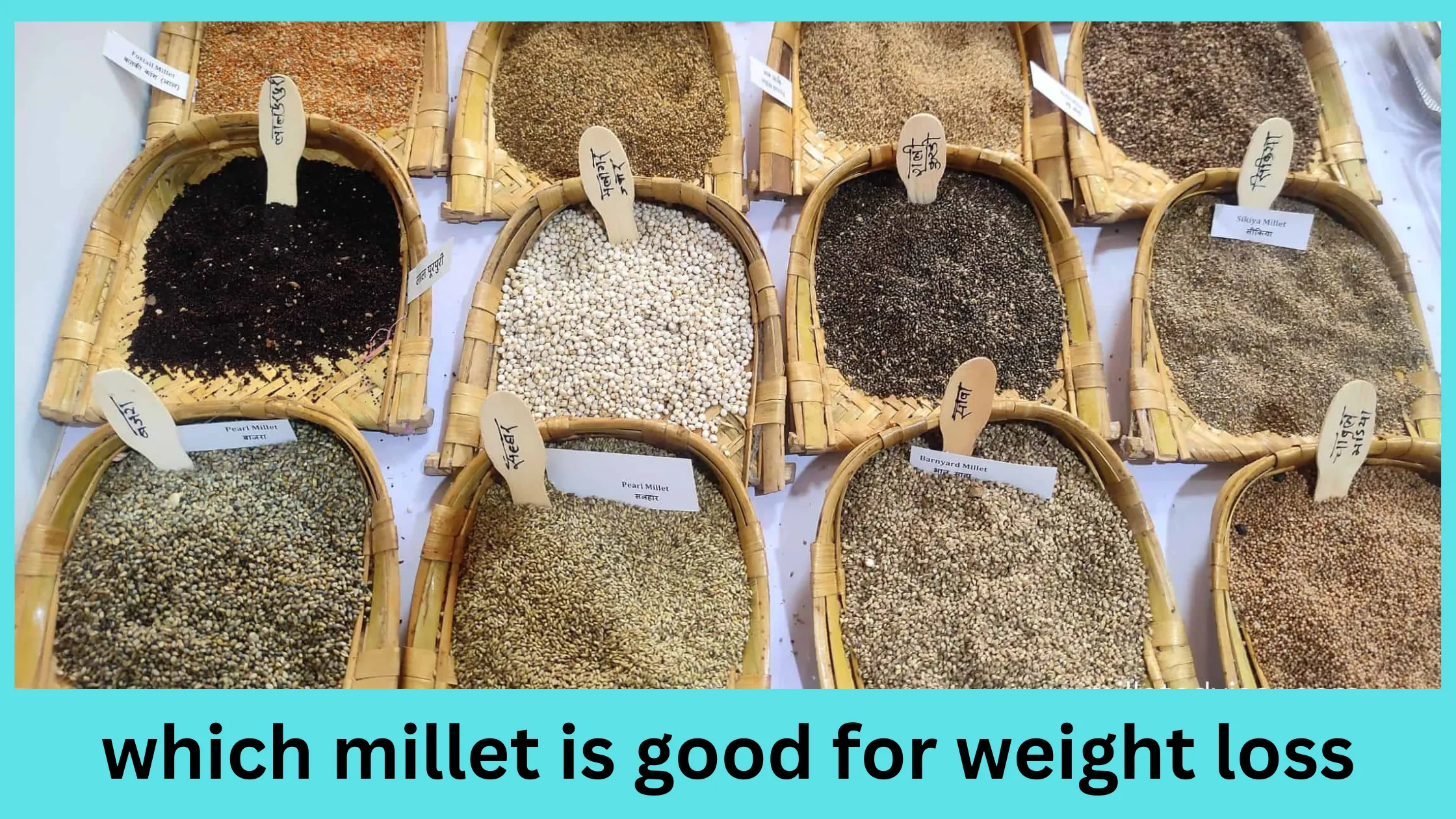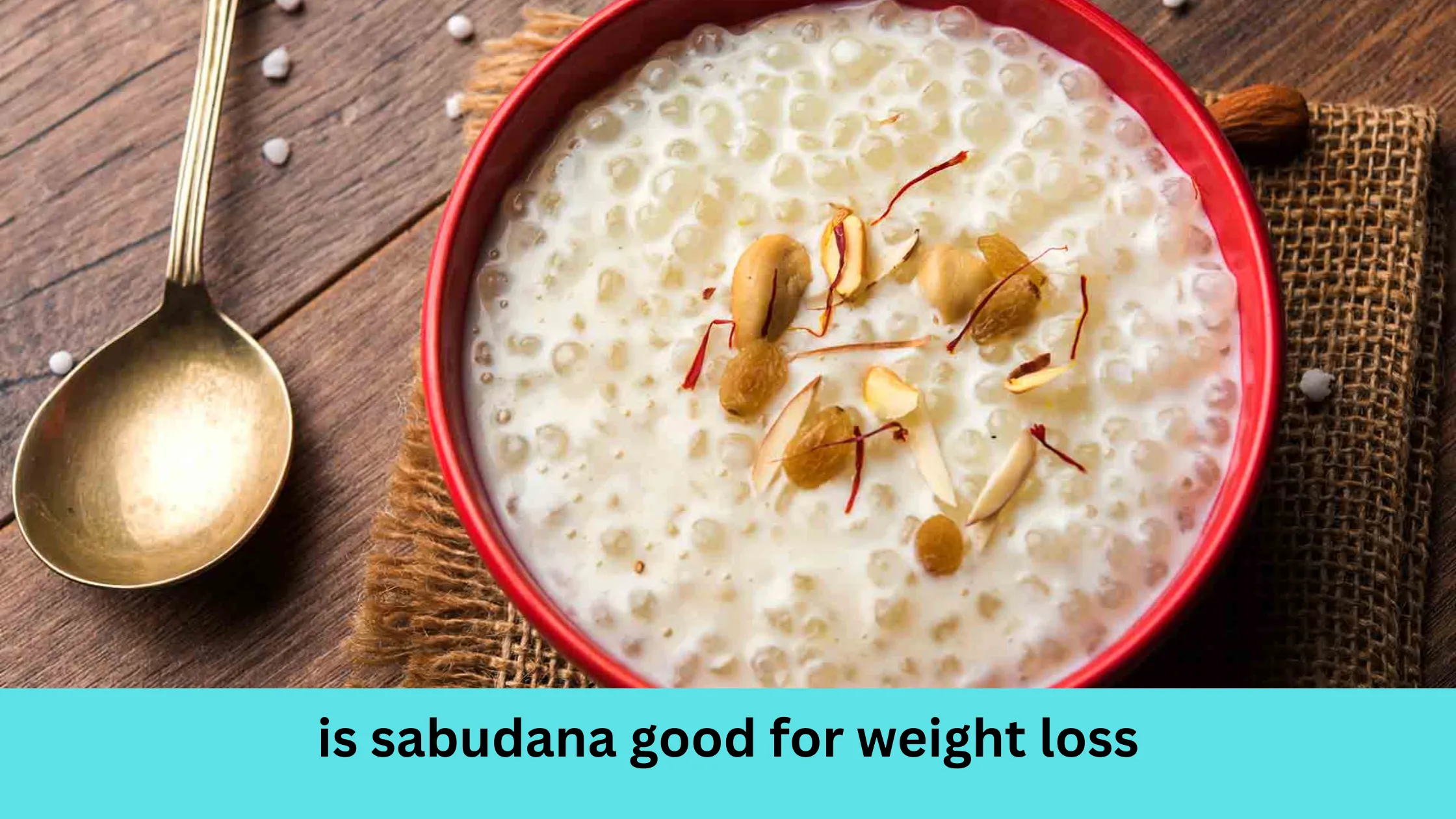Millets are making a big comeback, and for good reason! These ancient grains have been around for thousands of years and were once a staple in traditional diets across many cultures. Today, they’re gaining popularity again, especially among people looking for healthier, more natural alternatives to refined grains like rice or wheat.
But why the sudden interest in millets? Well, apart from being nutrient-rich, they’ve also earned a reputation for being excellent for weight loss. Packed with fiber, protein, and essential nutrients, millets can help keep you full longer, curb unhealthy cravings, and support your overall fitness goals.
In this blog, we’ll dive deep into which millet is best for weight loss and why. Plus, we’ll share some expert tips on how to include these amazing grains in your diet without feeling overwhelmed. By the end, you’ll know exactly how to use millets to support your weight loss journey in a way that’s both easy and delicious!
Let’s get started!
What Are Millets?
Millets are a group of small-seeded, nutrient-packed grains that have been grown and eaten for thousands of years. They are especially popular in parts of Asia and Africa, where they’re considered staple foods. These tiny grains might not be as well-known as rice or wheat, but they’re a powerhouse when it comes to nutrition and health benefits.
There are several types of millets, each with unique characteristics. Some of the most popular ones include:
- Foxtail Millet: Known for its high protein and mineral content, foxtail millet is light, easy to digest, and perfect for weight watchers.
- Finger Millet (Ragi): A favorite in South India, finger millet is packed with calcium and fiber, making it a great choice for those looking to manage their weight while boosting bone health.
- Pearl Millet (Bajra): This millet is rich in iron, magnesium, and protein, helping you feel full and stay energized throughout the day.
- Kodo Millet: Low in calories and high in fiber, Kodo millet is ideal for people looking to lose weight without compromising on nutrition.
- Barnyard Millet: One of the most diet-friendly options, barnyard millet is very low in calories and carbs, yet high in fiber.
What makes millets unique is that they’re gluten-free, making them a great alternative for those with gluten sensitivities or celiac disease. Additionally, their small size and tough exterior make them naturally resistant to pests, so they’re often grown without chemical pesticides.

In terms of taste, millets are versatile. They have a mild, nutty flavor that works well in both sweet and savory dishes. From porridges to pilafs, soups to salads, you can incorporate millets into nearly any meal.
In short, millets aren’t just a health food trend—they’re a traditional superfood with a lot to offer. Whether you’re trying to lose weight, manage a health condition, or simply eat healthier, millets can be a fantastic addition to your diet.
Why Millets Are Great for Weight Loss
Millets have gained a lot of attention recently, especially for their role in helping people lose weight. These tiny grains are packed with nutrients and offer multiple benefits that make them perfect for anyone looking to shed extra pounds. Here’s why they stand out:
1. High Fiber Content Keeps You Full Longer
One of the biggest challenges in weight loss is controlling hunger and avoiding unhealthy snacks. Millets are naturally high in dietary fiber, which helps you stay full for longer periods. Fiber slows down digestion, meaning you won’t feel hungry again right after eating. This not only helps curb overeating but also reduces the temptation to reach for high-calorie junk food.
2. Low Glycemic Index for Better Blood Sugar Control
Millets have a low glycemic index (GI), which means they release sugar into the bloodstream gradually. Why is this important? Because it prevents sudden spikes and drops in blood sugar levels, which are often responsible for those “sugar cravings” that can derail your diet. Stable blood sugar also means your body is more likely to burn fat instead of storing it.
3. Nutrient-Rich to Support Metabolism
Millets are not just low in calories—they’re also loaded with essential nutrients like magnesium, iron, phosphorus, and B vitamins. These nutrients are vital for maintaining a healthy metabolism, which is key to burning calories effectively. For example, magnesium helps your body regulate energy production, while B vitamins play a role in converting food into energy.
4. Gluten-Free and Easy to Digest
If you struggle with bloating or digestive discomfort from wheat-based foods, millets are a great alternative. They’re naturally gluten-free and easy to digest, which means they won’t leave you feeling heavy or sluggish after meals. Better digestion also plays a role in effective weight management.
5. Low-Calorie and Nutrient-Dense
Millets offer a lot of nutrition without adding unnecessary calories to your meals. They give you the energy you need to stay active while keeping your calorie intake in check. This makes them an ideal choice for anyone focusing on a calorie-deficit diet.
In short, millets work on multiple fronts—they keep you full, stabilize your energy levels, support fat-burning, and are easy on your digestive system. These qualities make them a must-have in any weight-loss-friendly diet.
Which Millet Is Best for Weight Loss?

When it comes to weight loss, choosing the right millet can make a big difference. Each type of millet has its unique qualities, but some stand out for their weight loss benefits. Let’s explore the best options in detail:
1. Foxtail Millet
Foxtail millet is one of the top choices for weight loss. It’s packed with protein, which helps keep you feeling full and supports muscle repair. It’s also low in fat, making it a great option if you’re trying to reduce your calorie intake. Plus, its high fiber content ensures better digestion and prevents overeating by keeping you satiated for longer.
How to Use It:
- Cook it like rice for a healthy alternative.
- Add it to salads or stir-fries for a hearty, low-calorie meal.
2. Finger Millet (Ragi)
Ragi, or finger millet, is a powerhouse of nutrition. It’s especially known for its high calcium content, which supports strong bones and boosts metabolism. Its slow-digesting carbs and fiber make it a perfect option for managing hunger and controlling blood sugar spikes—two key factors in weight loss.
How to Use It:
- Make ragi porridge or ragi balls as a filling breakfast.
- Use ragi flour to prepare healthy flatbreads or pancakes.
3. Kodo Millet
Kodo millet is another excellent choice for weight watchers. It has a low glycemic index, meaning it won’t cause a sudden spike in your blood sugar levels. This is crucial for people trying to manage their weight, as stable blood sugar prevents cravings. It’s also rich in fiber and antioxidants, which help improve digestion and detoxify the body.
How to Use It:
- Cook it with vegetables for a nourishing one-pot meal.
- Use it to make millet upma or a healthy version of fried rice.
4. Barnyard Millet
If you’re counting calories, barnyard millet is your best friend. It’s incredibly low in calories while still being rich in essential nutrients like iron and magnesium. It’s also high in fiber, which keeps your digestive system running smoothly and helps you avoid snacking between meals.
How to Use It:
- Prepare a light and fluffy barnyard millet salad.
- Use it to make millet dosa or a quick bowl of millet soup.
The Final Verdict
While all millets are great for weight loss, the “best” one depends on your personal preferences and dietary needs. For example:
- If you’re looking for high protein, go for foxtail millet.
- For better digestion and blood sugar control, kodo millet is ideal.
- If you want a low-calorie option, barnyard millet is unbeatable.
- For an overall nutrient boost, choose finger millet (ragi).
By rotating between these millets, you can enjoy a variety of flavors while maximizing their health benefits. Give them a try and see how they work for your weight loss journey!
How to Incorporate Millets into Your Diet
Adding millets to your diet for weight loss is simple and versatile. Here are some practical and easy ways to get started:
1. Start Your Day with Millet Porridge
Millet porridge is an excellent breakfast option that keeps you full for hours. Cook millets like foxtail or pearl millet with water or low-fat milk, add a pinch of cinnamon for flavor, and top it with fresh fruits or nuts. This meal is packed with fiber, protein, and healthy carbs to give you sustained energy throughout the day.
2. Replace Rice with Millets
Millets make a great substitute for white rice or even brown rice. You can use millets like barnyard or kodo millet to prepare your favorite rice dishes—think pulao, fried rice, or even simple steamed millet served with vegetables and dal. This swap cuts down on calories while boosting fiber intake.
3. Add Millets to Salads
Cooked millets can add texture and nutrition to salads. Mix millet with chopped vegetables, greens, and a light dressing made from olive oil and lemon juice. You’ll get a hearty, satisfying meal that’s low in calories but rich in nutrients.
4. Millet-Based Khichdi
Khichdi is a comforting, easy-to-digest meal. Use millets like finger millet or foxtail millet instead of rice. Add lentils, vegetables, and spices to make it flavorful and balanced. This dish is not only tasty but also perfect for weight watchers.
5. Millet in Baking
For those who enjoy baked goods, millet flour can be a healthier alternative to refined flour. Use it to bake muffins, pancakes, or even flatbreads. These baked items will have more nutrients and fiber, keeping you full longer.
6. Millet Rotis and Dosas
Incorporate millets into your everyday meals by making roti or dosa with millet flour. You can mix millet flour with whole wheat flour or use it on its own for soft and healthy flatbreads or crispy dosas. Pair them with vegetables or chutney for a balanced meal.
7. Soups and Stews with Millet
Add a handful of cooked millet to your soups or stews for extra bulk and nutrients. Millets blend well with both vegetable and chicken soups, making them heartier and more filling without adding extra calories.
Cooking Tips
- Soak Millets: Soaking millets for a few hours before cooking can make them easier to digest and reduce cooking time.
- Cook Like Rice: Use the same ratio of water to millet as you would for rice—usually 2:1 (water to millet).
- Season Well: Millets are mild in flavor, so don’t be afraid to spice them up with herbs, spices, or condiments.
Suggested Portion Sizes
While millets are healthy, portion control is key for weight loss. Stick to about 1 cup of cooked millet per meal and pair it with plenty of vegetables and some protein (like beans, tofu, or lean chicken) to create a balanced plate.
By experimenting with these ideas, you’ll not only enjoy the health benefits of millets but also add variety and flavor to your meals.
Expert Tips for Maximizing Weight Loss with Millets
If you’re looking to lose weight with the help of millets, it’s important to go beyond just eating them. Here are some expert-backed tips to get the most out of these nutrient-packed grains:
1. Combine Millets with a Balanced Diet
Millets are great, but they shouldn’t be the only thing on your plate. To get the best results, pair them with other nutrient-rich foods. Add plenty of vegetables to your millet meals for fiber, vitamins, and minerals. For example, make a millet salad with cucumbers, tomatoes, and bell peppers or mix cooked millets with stir-fried veggies.
Don’t forget protein—it’s key for weight loss because it helps build muscle and keeps you full for longer. Add lean proteins like grilled chicken, tofu, paneer, or even a handful of boiled chickpeas to your millet dishes.
2. Watch Your Portion Sizes
Just because millets are healthy doesn’t mean you should eat unlimited amounts. Portion control is crucial, especially when you’re trying to shed extra pounds. Stick to about ½ to 1 cup of cooked millet per meal. Pair it with plenty of veggies and protein to make a complete, satisfying plate that doesn’t overload you with calories.
3. Rotate Between Different Types of Millets
Variety is the spice of life—and it’s also great for your body! Each type of millet has its unique benefits. For example:
- Foxtail millet is high in protein and great for muscle building.
- Ragi (finger millet) is loaded with calcium and helps boost metabolism.
- Kodo millet is low in calories and high in fiber, perfect for managing hunger.
Switching between different types ensures you get a wide range of nutrients while keeping your meals interesting.
4. Use Millets as a Substitute for Refined Grains
Replace white rice or refined flour with millets wherever possible. For instance, swap rice in your favorite biryani or pulao recipe with foxtail or barnyard millet. Use millet flour to make healthier versions of pancakes, dosas, or chapatis. This simple change can significantly cut down on empty calories while improving the nutritional value of your meals.
5. Avoid Over-Processing Millets
Stick to millets in their most natural form. Highly processed millet products, like instant millet mixes or millet-based snacks, may have added sugar, salt, or preservatives that negate their health benefits. Cooking millets at home ensures you’re eating them in their purest, healthiest form.
6. Stay Hydrated
Millets are rich in fiber, which is excellent for weight loss but can sometimes cause bloating or constipation if you don’t drink enough water. Make sure to stay hydrated throughout the day, especially when including millets in your diet. Aim for at least 8–10 glasses of water daily.
7. Pair Millets with Physical Activity
While millets can help manage your weight, they work best when combined with an active lifestyle. Even light activities like walking, yoga, or cycling can complement your millet-rich diet and help you see faster results.
By following these simple tips, you can enjoy the many health benefits of millets while achieving your weight loss goals. Start small, stay consistent, and don’t forget to listen to your body’s needs!

Potential Precautions and Things to Keep in Mind
While millets are a fantastic addition to your weight loss journey, there are a few things you should be aware of to get the best results and avoid any potential downsides. Here are some precautions and tips to keep in mind:
1. Don’t Overeat Millets
Millets are healthy, but eating too much of them can backfire. Since they are rich in carbohydrates, consuming large quantities might lead to excessive calorie intake, which could slow down your weight loss progress. The key is portion control—stick to 1–2 servings per meal to stay within your calorie limits while still enjoying their benefits.
2. Rotate Between Different Millets
Each type of millet has its own unique nutrients, so rotating between varieties like foxtail, finger, or barnyard millet ensures you get a broader range of benefits. This not only keeps your meals interesting but also prevents your body from becoming too accustomed to one type of millet, which can sometimes lead to nutritional imbalances.
3. Be Cautious if You Have Thyroid Issues
Some millets, such as pearl millet (bajra), contain goitrogens—compounds that can interfere with thyroid function if consumed in very high amounts. If you have hypothyroidism or other thyroid-related conditions, it’s best to consult a doctor or nutritionist before adding millets to your diet.
4. Soak and Cook Properly
Millets contain antinutrients like phytic acid, which can reduce the absorption of certain minerals like iron and calcium. To minimize this, soak millets for a few hours before cooking. This simple step enhances their digestibility and makes their nutrients more bioavailable.
5. Balance Millets with Other Foods
While millets are nutrient-dense, they shouldn’t be your only source of nutrition. Pair them with vegetables, lean proteins, and healthy fats to create balanced meals. For example, combine millet with a vegetable curry or toss it into a salad with grilled chicken for a wholesome, weight-loss-friendly dish.
6. Watch for Digestive Issues
Millets are high in fiber, which is great for keeping you full, but if you’re not used to a high-fiber diet, you may experience bloating or discomfort initially. Start with smaller portions and gradually increase your intake to allow your digestive system to adapt. Also, drink plenty of water to help your body process the fiber efficiently.
7. Avoid Processed Millet Products
Millets in their whole form are the most beneficial for weight loss. Be cautious of processed millet products like instant millet noodles or ready-to-eat millet snacks, as they often contain added sugars, unhealthy fats, or preservatives that can sabotage your weight loss efforts. Always read labels and choose minimally processed options.
By keeping these points in mind, you can enjoy the amazing benefits of millets without any hiccups. Remember, moderation, balance, and preparation are key to making the most of these super grains on your journey to a healthier you!
Success Stories and Testimonials
Incorporating millets into a weight loss journey has transformed the lives of many people. While everyone’s experience is unique, the benefits of adding this nutrient-rich grain to a healthy diet often shine through in inspiring success stories. Let’s explore a few examples and expert insights to give you real-life motivation.
Real-Life Success Stories
- Neha’s Journey: Losing 10 kg with Millets and a Balanced Diet
Neha, a 32-year-old working professional, was tired of crash diets that left her feeling drained and unsatisfied. After consulting a nutritionist, she switched to a diet rich in millets like foxtail and barnyard millet. She began her mornings with a bowl of millet porridge and swapped white rice for millet in her lunch. Over six months, combined with daily walks and portion control, Neha shed 10 kg. What surprised her most was how full and energetic she felt, even while eating fewer calories. - Rahul’s Story: Gaining Control Over Cravings
Rahul, a 40-year-old teacher, struggled with late-night cravings, which were sabotaging his weight loss efforts. When a friend suggested finger millet (ragi), he started including it in his diet as a filling evening snack, often in the form of a ragi dosa or smoothie. The high fiber content helped curb his cravings, and within a few months, Rahul not only lost weight but also improved his overall digestion.
Expert Insights
Nutritionists and dietitians often praise millets as a sustainable weight-loss food. Here’s what they have to say:
- Millets Help You Feel Full Longer:
“Millets are a game-changer for weight loss because they’re high in fiber and keep hunger at bay. They prevent overeating and help people stick to their calorie goals,” says Dr. Priya Mehta, a dietitian with over 10 years of experience. - They Fit Any Lifestyle:
“Whether you’re vegan, gluten-free, or just looking to eat healthier, millets can easily be adapted into your meals. They’re incredibly versatile,” says Chef Arun, who specializes in healthy cooking. - Sustainable Results Over Quick Fixes:
“Unlike fad diets, millets offer sustainable results. They work gradually by improving your metabolism and regulating blood sugar levels,” explains Dr. Kavita Sharma, a weight management expert.
How You Can Start Your Own Millet Journey
If these stories inspire you, the best way to start is to incorporate millets gradually. Begin by replacing one meal a day with millet-based dishes. For instance, swap white rice for millet in your lunch or try millet pancakes for breakfast. Track your progress and notice how your body responds.
Remember, weight loss is not about extreme restrictions but finding a balance that works for you. Millets can be your trusted ally on this journey—nourishing your body while helping you achieve your goals.
Have you tried millets for weight loss? Share your experience in the comments! Your story could inspire someone else.

My name is Seema. I am 25 years old. I have been blogging for 2 years. I love to talk about weight loss or I am also interested in this topic. I am a professional content writer. I want to share information about weight loss through my blog. Thank you.




